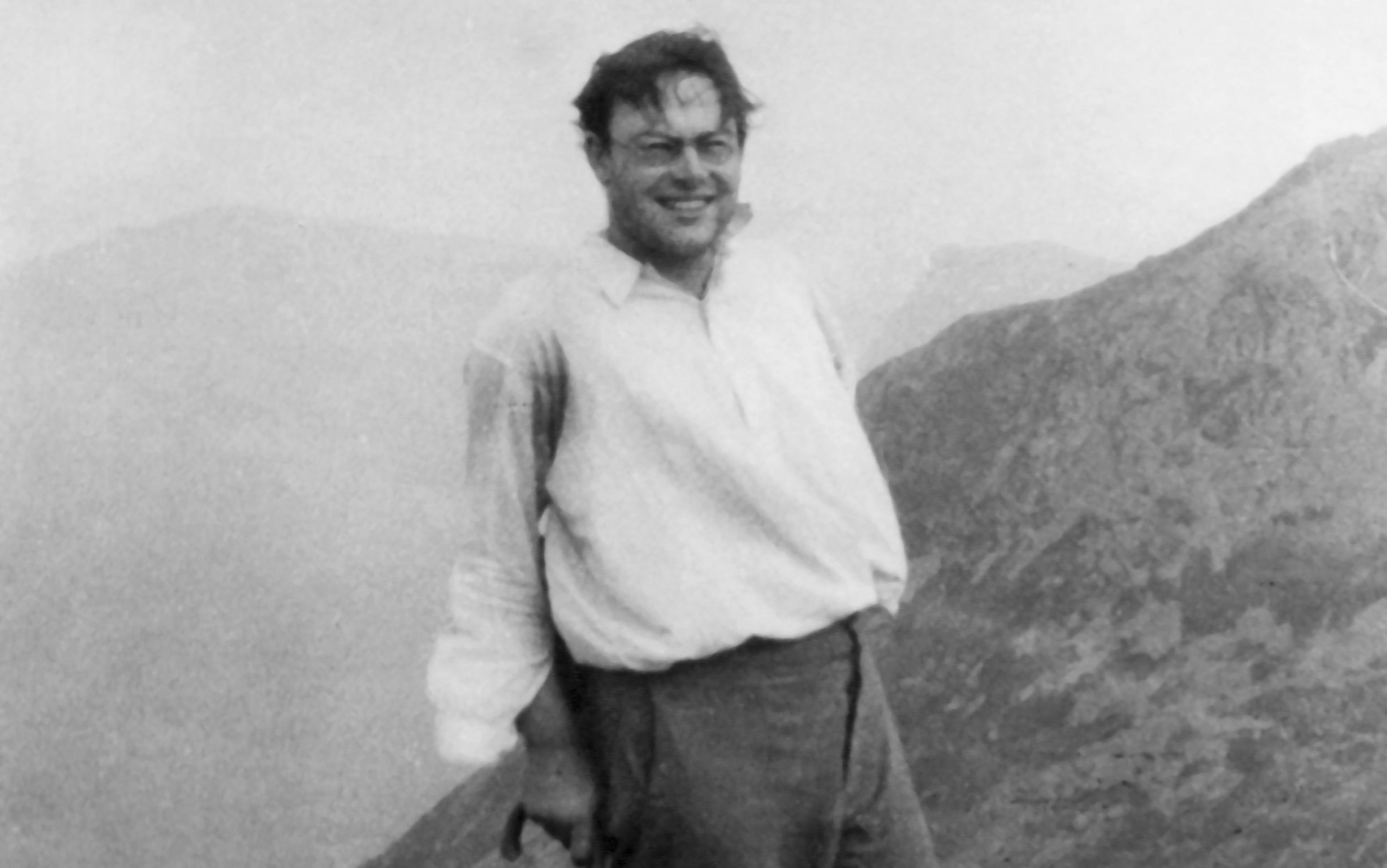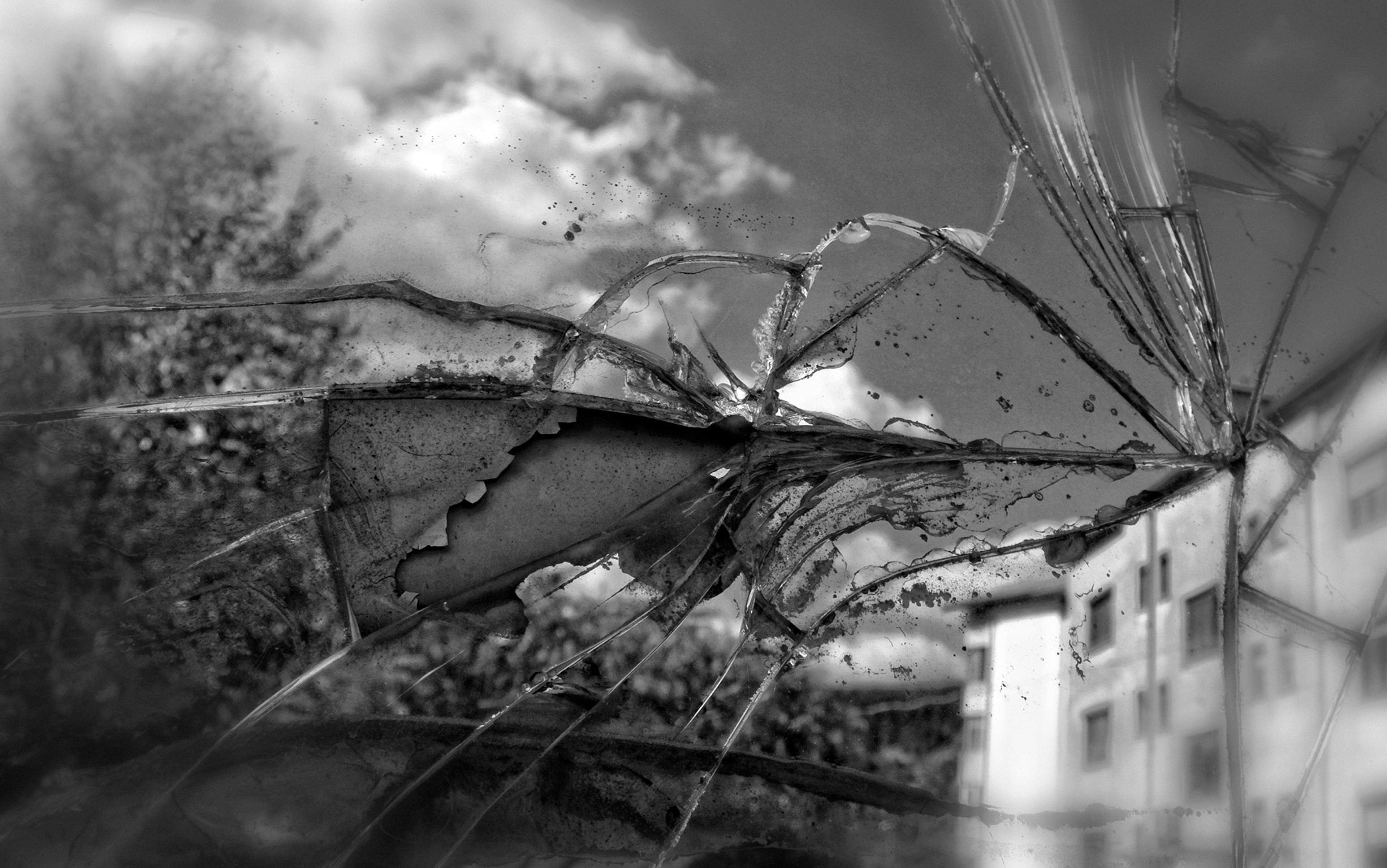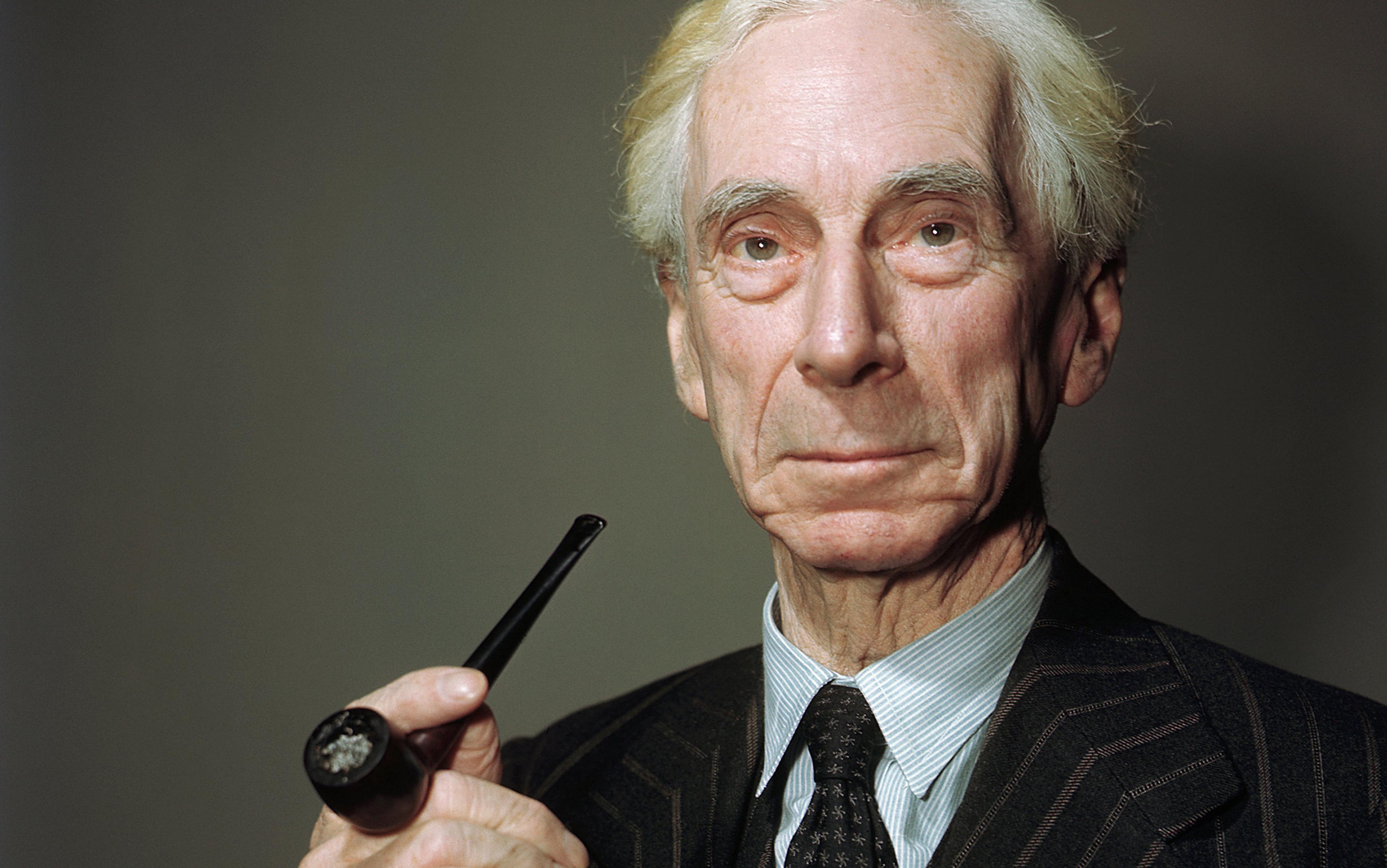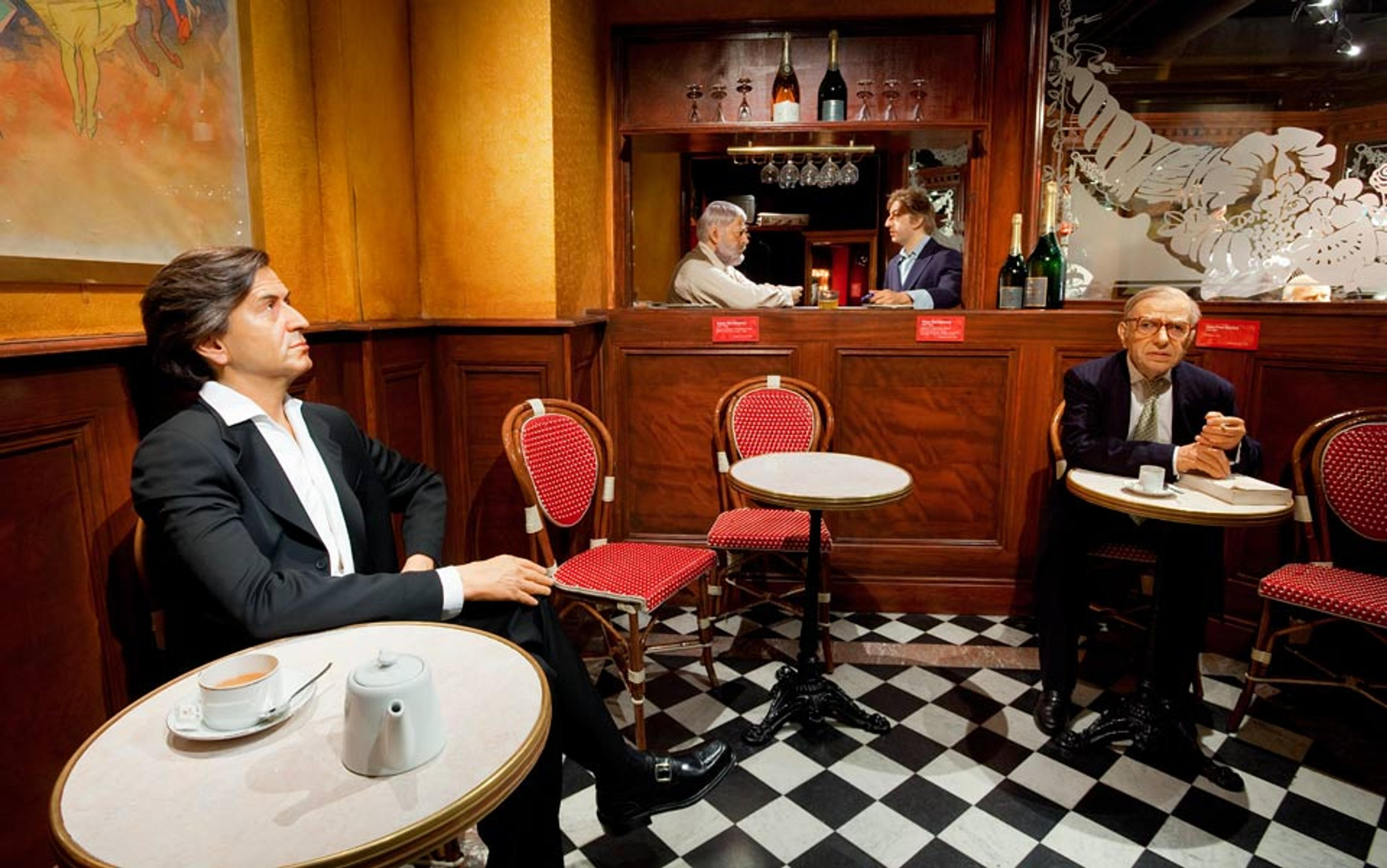Vienna in the 1920s was an exciting place. Politically, it was the time of Red Vienna, when the municipal government experimented with radical democratic reforms in housing, healthcare, education and worker’s rights. There was optimism in the air, despite postwar hyperinflation and rising conservatism. It was also an exciting time intellectually, for one of the most influential movements in the history of philosophy was in full swing: the Vienna Circle.
They were a group of philosophers, mathematicians and physicists who gathered around the German philosopher Moritz Schlick, and included luminaries such as Rudolf Carnap, Otto Neurath and Herbert Feigl. The Circle put forward an ambitious programme that would have all knowledge constructed out of an objective foundation of observation and deductive logic. Their ‘verifiability principle’ would assert that a meaningful sentence had to be reducible, via truth-preserving logic, to a basic language of observation statements. Metaphysics, ethics, religion and aesthetics were either to be revised so as to be stated in this scientific language, or else declared meaningless – mere nonsense. These new scientific philosophers were socially progressive, at home in Red Vienna, and they saw themselves as intellectually progressive as well. Unfortunately, others all too readily concurred, such as the fascist student who gunned down Schlick on the steps of the University of Vienna in 1936.
Theirs was an idea whose time had come. A similar group was developing in Berlin, with Hans Reichenbach and Carl Hempel as its most prominent members. In Cambridge, Bertrand Russell had also been arguing that philosophy must proceed by a logical analysis that bottoms out in simple, metaphysically fundamental existents in the world. But it was Russell’s Viennese student Ludwig Wittgenstein who most intrigued the Circle with his first book, written mostly during the First World War on the perilous Eastern and Italian fronts, where he was ultimately taken as a prisoner of war.
Wittgenstein’s Tractatus Logico-Philosophicus was an extraordinary, and extraordinarily difficult, piece of work – an attempt to specify the exact relationship between language and reality. Language, like a picture, represents objects a certain way: objects ‘correspond’ to ‘elements of the picture’. In order to tell whether a picture is true or false, we have to ‘compare it with reality’, and this is the province of the natural sciences: ‘The totality of true propositions is the total natural science.’ Wittgenstein declared that all that was sayable could be expressed in this primary language, and what could not be expressed in this language was nonsense. He ended the Tractatus with the words: ‘Whereof one cannot speak, thereof one must be silent.’
Schlick told Albert Einstein that Wittgenstein’s book was the ‘deepest’ work of ‘the new philosophy’. The Vienna Circle adopted it as a kind of founding document. They noticed, but swept under the rug, the fact that Wittgenstein’s account of nonsense differed from their own. While the Circle tossed large swaths of metaphysics and ethics – the questions of life – into the bin, Wittgenstein thought that they transcended, and were more important than, the elementary language. Despite this tension, Wittgenstein was engaged with the Circle right up to Schlick’s death.
After the war, it took Russell three years of effort to get Wittgenstein’s manuscript out of Europe. It was first published in a German journal, Annalen der Naturphilosophie (uncorrected by its author, with typos and mistakes), and then placed into the hands of a translator. That was the 18-year-old Frank Ramsey, a brilliant Cambridge mathematics undergraduate who would become famous as a pioneer of subjective probability theory, decision theory, two branches of economics, Ramsey Theory in pure mathematics, and a vast number of philosophical innovations.
The relationship of this remarkable young man to the Vienna Circle is a fascinating moment in the history of philosophy. It is, however, largely misunderstood. Once we see it aright, the way is cleared to a promising alternative position about truth and knowledge, one that might have had a tremendous influence on the Vienna Circle, had things unfolded differently.
The Circle listed Ramsey in their Manifesto of 1929 as one of those ‘sympathetic’ to their mission, and this is still a frequently expressed opinion. But it simply isn’t true. Ramsey, young as he was, pulled against Russell, Wittgenstein and the Vienna Circle, who at the time were engaged in a quest for certainty and purity. In contrast, Ramsey sought conceptions of truth and knowledge that had their basis in what would work best for human beings. He called himself a ‘pragmatist’, after the founder of the American tradition of pragmatism, Charles S Peirce (1839-1914). While Peirce too was committed to taking experience seriously, and to declaring abstruse metaphysics meaningless, he thought that truth was what would best fit with human experience and knowledge – a conception of truth miles away from the reductionist theory typified by the Vienna Circle.
Ramsey’s translation of Tractatus was published in 1922, with Wittgenstein making line-by-line revisions by post. In September 1923, Ramsey spent a fortnight with Wittgenstein, in his home in the mountains close to Vienna. During this marathon conversation about the Tractatus, Ramsey was relieved to find that his ‘Critical Notice’ of it, which was already in press, was still right. In the summer of 1924, Ramsey went to Vienna for six months, to be psychoanalysed (he was paralysed about relations with women), and to spend more time with Wittgenstein. He was introduced to Schlick by Wittgenstein’s sister Gretl (of the famous Klimt portrait) and he soon met another Circle member, the mathematician Hans Hahn, who arranged for him to use the university library.
Belief has a causal impact on our actions: we evaluate beliefs in terms of how well they work
During his stay in Vienna, Ramsey wrote a paper titled ‘The Foundations of Mathematics’. It was influenced by Wittgenstein, even as he was writing home that Wittgenstein was ‘no good for my work’. When it was published, he sent it to Schlick, writing ‘With the compliments of the author’ on the first page. Carnap’s diary records that the Circle talked about the paper for two weeks in January 1927, and then intermittently right through to 1929. Carnap’s first entry about Ramsey says: ‘We talked about Wittgenstein and Ramsey. Very interesting.’
What they found most interesting was Ramsey’s extension of Wittgenstein’s notion of tautology. Like all empiricists, the members of the Vienna Circle struggled to say just why the statements of logic and mathematics are legitimate, since they cannot be verified by experience. In the 18th century, David Hume had invoked a too-convenient separation of matters of fact and relations of ideas, with the latter (which included the mathematical and logical) simply being exempted from the observational criterion. Almost a century later, John Stuart Mill had made an unsuccessful attempt to treat mathematics as an observable science. The Circle was happy to find the first part of their own answer in Wittgenstein’s idea that the truths of logic are tautologies. That is, they are true come what may, and hence stand away from the empirical standard of meaningfulness. Ramsey’s idea was that mathematics also consists of tautologies. The Circle adopted these two moves as the turning point in their philosophy.
While the Circle was discussing ‘The Foundations of Mathematics’, Ramsey was writing a new paper, ‘Facts and Propositions’. It was published in the 1927 Proceedings of the Aristotelian Society, and was mentioned in the Manifesto as another of Ramsey’s sympathetic papers. In it, he utilised Wittgenstein’s conception of tautology in a novel way. Wittgenstein had argued (in Ramsey’s words) that a logical truth ‘excludes no possibility and so expresses no attitude of belief at all’. From here, Ramsey arrived at one of his most fruitful insights. Beliefs exclude possibilities, and that is how we can tell one belief from another. What it is to believe a proposition is, in large part, to behave in certain ways, and to take various possibilities as either alive or dead. It is of the essence of a belief that it has a causal impact on our actions, and we evaluate beliefs in terms of how well they work. In a paper written at the same time, ‘Truth and Probability’, he went on to argue that some habits are a better basis for action than others. Truth is linked to usefulness.
Schlick and Ramsey remained in contact after Ramsey’s time in Vienna. In 1927, Ramsey invited Schlick to present a paper at the Moral Sciences Club, a discussion group at the University of Cambridge, and they both got along very well. Presumably, Ramsey kept to himself his opinion that Schlick’s The General Theory of Knowledge contained some ‘sad rubbish’; his first impression remained steady throughout his life: ‘He didn’t seem to me much of a philosopher, but a very nice man.’ But despite this ongoing contact, Schlick and the rest of the Circle seemed to be unaware that Ramsey was moving at speed away from their project, that he was developing a pragmatic outlook that clashed with their attempt to construct the world out of logic and observation.
In the 1950s, Carnap and Hempel were still seeking to articulate that constructionist project. The idea was that classes of experience are constructed from individual time-slices of sensory experiences, then concepts (such as ‘blue’) are built up, then objects, and then higher concepts. But what about unobservable entities such as electrons? Or scientific laws and theories that make generalisations about what is observed – and go well beyond it? The solution was again found in Ramsey.
In ‘Theories’, a paper he wrote in 1929, Ramsey argued that we can indeed construct a scientific theory from simple observational facts, using a set of axioms and a dictionary that translates the primary language into the secondary, theoretical, language. But he is clear that these definitions are not necessary for the ‘legitimate use of the theory’. It is merely ‘instructive’ to show how such definitions could be constructed. Part of the instruction is to show how it might be done, for Russell, Carnap and others ‘seem to suppose that we can and must do this’. But part of the instruction is negative: Ramsey thought that the project wouldn’t work.
Scientific theories presented another problem for the Circle. How does the theory of mass change or get improved upon? On their explicit-definition account, it seems that every time the theory changes, we change the meanings of the terms in the older versions or refer to new, different entities. Ramsey thinks this shows that ‘the dictionary alone does not suffice’, unless we are happy with a finite, primary system much less rich than the theory itself. All ‘useful theories’ must have ‘more degrees of freedom’ than the primary system. There would be no point in having a secondary system – no point in having a scientific theory – unless it went beyond a catalogue of the current facts. That is, Ramsey showed that Carnap’s project – as he understood it from Carnap’s work The Logical Construction of the World (1928) – could be completed, but would be no good at all.
He then made a new move, which Carnap and Hempel would pick up in the 1950s, after the strict definitional approach had indeed proved too limited. We can elucidate the role of theoretical terms such as ‘electron’ in a long and complex formal sentence that contains both theoretical and observational terms. The sentence will start with: ‘There are things we call electrons, which …’, and then go on to tell a story about those electrons. We assume that there are electrons for the sake of the story, just as we assume that there is a girl when we listen to a story that starts: ‘Once upon a time there was a girl, who …’ Any additions to the theory are to be made within the scope of the quantifier that says that there exists at least one electron. The theory can now evolve while still being about the original entities.
Additions to the theory of electrons are not beliefs that are true or false in the strict sense of the primary language. We commit ourselves to the existence of the entities in our theory, knowing that if it gets overthrown, so will our commitment to its entities. In the meantime, we use the theory. As always, Ramsey was interested in how we use something, not in pure metaphysics – he was interested in a ‘human logic’ that tells us how we should think. Such a logic ‘is not merely independent of but sometimes actually incompatible with formal logic’.
‘I did not realise the vagueness of the whole idea of understanding’
Wittgenstein returned to Cambridge in 1929, after a self-imposed exile. He soon began talking to Ramsey again, after having given him the silent treatment for four years, following a disagreement about the value of Sigmund Freud’s thought (Wittgenstein was not easy to get along with). He quickly discerned the direction in which Ramsey was travelling, and he didn’t like it. The two were locked in an almost daily battle over the right approach to philosophy. As Ramsey put it in a 1929 draft paper titled ‘Philosophy’, one method, ‘Ludwig’s’, is to:
construct a logic, and do all our philosophical analysis entirely unselfconsciously, thinking all the time of the facts and not about our thinking about them, deciding what we mean without any reference to the nature of meanings.
Ramsey’s method, in contrast, directed us to the human facts, not the facts somehow abstracted from our understanding of them. He admitted to having once been under the sway of Wittgenstein’s conception of philosophy:
I used to worry myself about the nature of philosophy through excessive scholasticism. I could not see how we could understand a word and not be able to recognise whether a proposed definition of it was or was not correct. I did not realise the vagueness of the whole idea of understanding, the reference it involves to a multitude of performances any of which may fail and require to be restored.
He now thinks that we will often run into terms ‘we cannot define, but … can [only] explain the way in which they are used’. Ramsey thought that the ideal language Wittgenstein was trying to construct was mere scholasticism, ‘the essence of which is treating what is vague as if it were precise and trying to fit it into an exact logical category’.
He even opened one draft of ‘Philosophy’ with an explicit reprimand to Wittgenstein:
Philosophy must be of some use and we must take it seriously; it must clear our thoughts and so our actions, or else it is a disposition we have to check … ie the chief proposition of philosophy is that philosophy is nonsense. And again we must then take seriously that it is nonsense, and not pretend, as Wittgenstein does, that it is important nonsense!
We must avoid the ‘absurd position’ of the child in the following dialogue: ‘Say breakfast.’ ‘Can’t.’ ‘What can’t you say?’ ‘Can’t say breakfast.’ Most famously, Ramsey quipped: ‘But what we can’t say we can’t say, and we can’t whistle it either.’
Ramsey had two objections to Wittgenstein’s view that philosophy is nonsense and should be abandoned. First, Wittgenstein cannot argue for a particular view of the nature of meaning, a consequence of which is that the very argument for that view is meaningless. We do in fact understand Wittgenstein’s philosophical argument. It is not a ladder that, once climbed, needs to be kicked away, as Wittgenstein advised in the Tractatus. Second, this kind of philosophy is impoverished. If, as Wittgenstein holds, philosophy’s task is to take the propositions of science and ordinary life and ‘exhibit them in a logical system with primitive terms and definitions’, philosophy really is of not much use at all. In a note from 1929 he said:
The standardisation of the colours of beer is not philosophy, but in a sense it is an improvement in notation, and a clarification of thought.
Both objections hold for the Vienna Circle too, although one thing Ramsey did share with them was an incredulity toward Wittgenstein’s idea that there is something inexpressible yet important – that one could peer through the fence, glimpse the unsayable, and stand in awe of it.
Ramsey’s approach, and his rebellion against Wittgenstein and the Vienna Circle, were starting to become fully formed. He summed it up perfectly in another note:
We cannot really picture the world as disconnected selves; the selves we know are in the world. What we can’t do we can’t do and it’s no good trying. Philosophy comes from not understanding the logic of our language; but the logic of our language is not what Wittgenstein thought. The pictures we make to ourselves are not pictures of facts.
If a proposition is a picture of the world, disconnected from any reference to the self whose picture it is, then we are totally vulnerable to skepticism or solipsism. How are we to bridge the gap between ourselves and that world? How can we even make claims about that world? Wittgenstein’s primary world ‘contains no thought’. If we want to understand the world, we must not neglect the ‘subjective side’. Ramsey thought that Carnap made the same ‘mistake’:
Solipsism in the ordinary sense in which as eg in Carnap the primary world consists of my experiences past present and future will not do. For this primary world is the world about which I am now thinking …
We need the irreducible secondary world, full of hypotheses, laws and claims about the existence of objects, if we are to think about the world at all.
Ramsey thought Wittgenstein’s philosophy needed sobering up, and to pay attention to human beliefs
Wittgenstein was stung by this onslaught. In 1930, he wrote: ‘Ramsey’s mind repulsed me’; he had no capacity for ‘genuine reverence’; he had an ‘ugly mind’; and ‘his criticism didn’t help along but held back and sobered’. He told his friends that Ramsey was a ‘materialist’. Ramsey thought that Wittgenstein’s philosophy needed sobering up, and needed to pay attention to human beliefs, rather than independently existing propositions.
And here their debate breaks off, for Ramsey died on 19 January 1930, aged just 26. But years later, Wittgenstein would come around to Ramsey’s side. When he did, he stopped saying nasty things about his friend, and instead thanked him in the preface to his second great treatise, Philosophical Investigations, which charted a very different course than the Tractatus:
since I began to occupy myself with philosophy again, 16 years ago, I could not but recognise grave mistakes in what I set out in that first book. I was helped to realise these mistakes – to a degree which I myself am hardly able to estimate – by the criticism which my ideas encountered from Frank Ramsey, with whom I discussed them in innumerable conversations during the last two years of his life.
Ramsey, in the end, prevailed over Wittgenstein. But while Wittgenstein knew and felt the force of Ramsey’s objections and alternative position, the Vienna Circle remained unaware, partly because Ramsey didn’t get a chance to hammer away at them in person, the way he had with Wittgenstein. Ramsey and Carnap, unfortunately, never met. But just before Ramsey died, his mind was on Carnap. On 4 December, Ramsey wrote to Schlick, expressing doubts about Carnap’s attempt to reconstruct the world out of a primary language:
I feel very guilty that I’ve not yet written a review of Carnap’s book, which is really inexcusable. I found it very interesting, though some things I thought certainly wrong and others I felt very doubtful about.
He apologised for the delay: ‘I am very sorry and will do it when I next have leisure. At the moment I am in bed with a very severe attack of jaundice.’ Ramsey would not have the chance to set his position against Carnap’s. That liver infection would kill him a few weeks later.
In the 1930s, the Vienna Circle started to feel the pressure, from other quarters, of what Ramsey called ‘the objection from philosophy of science’ and the objection about solipsism. In response, they would develop more liberal, inclusive, behaviourist versions of logical empiricism. That is, many in the Circle moved closer to Ramsey, without knowing it. Had they felt the force of Ramsey’s objections and pragmatist alternative earlier, pragmatism and analytic philosophy would not have been thought to be in such opposition to each other. The Vienna Circle would not have been seen as the bogeyman of philosophy, as it is now, but as delivering a human account of what it is to have a belief be responsive to the way things are. Ramsey was the bridge between 20th-century pragmatism and analytic philosophy, and when he died, that route was obscured – only to be recently rediscovered and put on the map.






